Your cart is empty!
Make checkout easy by booking all your reservations at once. Add your sites from different campgrounds into your shopping cart* and then choose checkout.
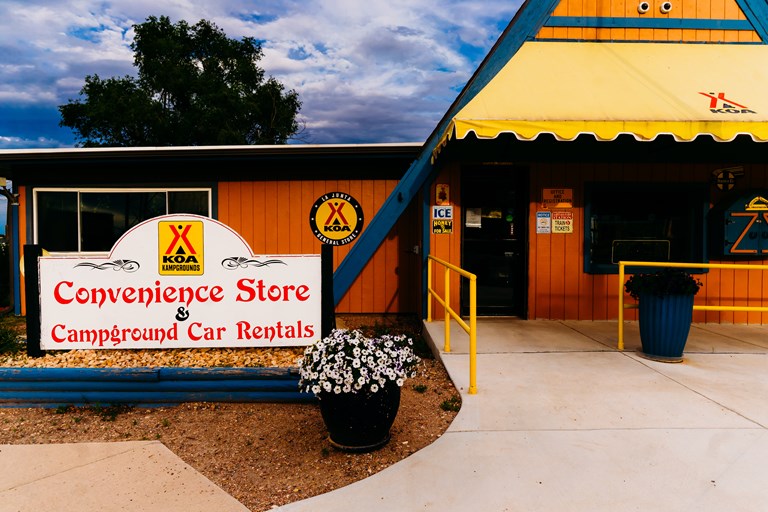
Located just a short drive from many attractions, La Junta KOA is the perfect place to stay while exploring the area!
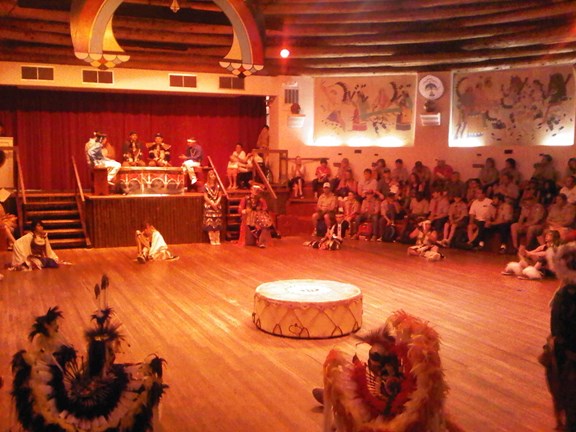
The museum houses one of the largest collections of Native American artifacts and art in the world. There are Indian dance performances during the summer months. See their web site to view the photo gallery.
115 W 18th st.
La Junta, CO 81050
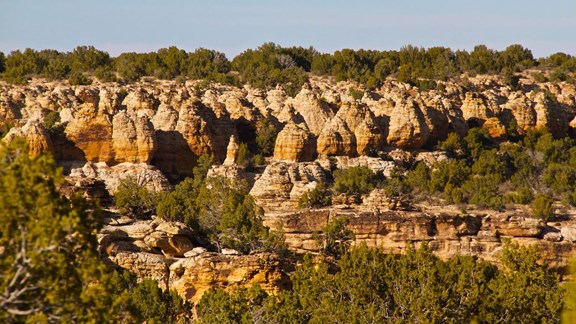
Picketwire and Vogel Canyons are scenic canyon lands and have hiking and mountain biking trails. Hike, bike or auto tour to North America's largest mapped site of dinosaur tracks. See our photo gallery for pictures.
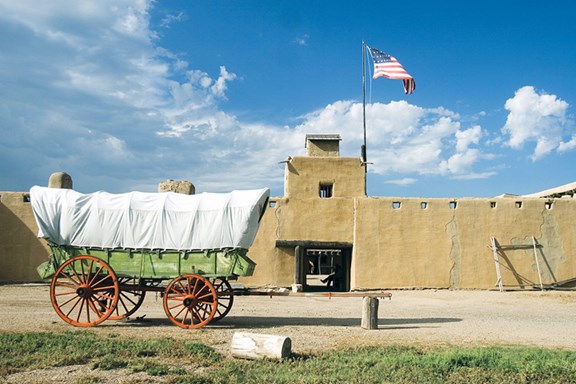
Bents Old Fort National Historic Site is a reconstructed frontier trading post. It was originally built in 1833-1834, on the Santa Fe Trail. The Fort hosts re-enactments and has daily tours. A must see when visiting La Junta. See their web site to view the photo gallery.

The museum has an extensive collection of exhibits, pictures and artifacts. Both educational and informative, it is enjoyable to visit. Take a step back in time, admission is free, the museum operates on donations. See photo gallery.
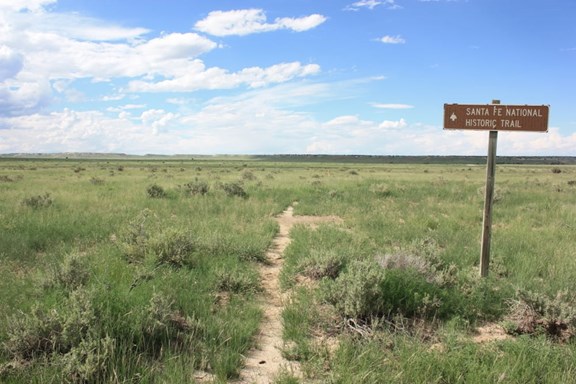

La Junta Municipal Golf Club is a nine hole golf course with a nice restaurant called the Rattlesnake Bar & Grill.
27696 Harris Rd.
La Junta, CO 81050
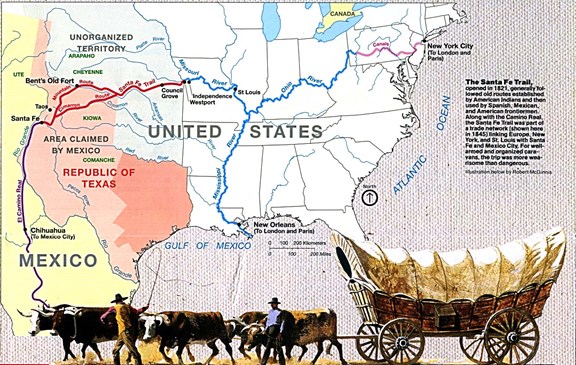
The Santa Fe Trail was a 19th-century transportation route through central North America that connected Franklin, Missouri with Santa Fe, New Mexico.[1][2][3][4] Pioneered in 1821 by William Becknell, who departed from the Boonslick region along the Missouri River, the trail served as a vital commercial highway until the introduction of the railroad to Santa Fe in 1880. Santa Fe was near the end of the El Camino Real de Tierra Adentro, which carried trade from Mexico City.The route skirted the northern edge and crossed the north-western corner of Comancheria, the territory of the Comanches, who demanded compensation for granting passage to the trail, and represented another market for American traders. Comanche raiding farther south in Mexico isolated New Mexico, making it more dependent on the American trade, and provided the Comanches with a steady supply of horses for sale. By the 1840s, trail traffic along the Arkansas Valley was so heavy that bison herds could not reach important seasonal grazing land, contributing to their collapse, which in turn hastened the decline of Comanche power in the region.[5]The American army used the trail route in 1846 for the invasion of New Mexico during the Mexican–American War.[6]After the U.S. acquisition of the Southwest ending the war, the trail helped open the region to U.S. economic development and settlement, playing a vital role in the expansion of the U.S. into the lands it had acquired. The road route is commemorated today by the National Park Service as the Santa Fe National Historic Trail. A highway route that roughly follows the trail's path through the entire length of Kansas, the southeast corner of Colorado and northern New Mexico has been designated as the Santa Fe Trail National Scenic Byway.
35110 CO-194
La Junta, CO 81050
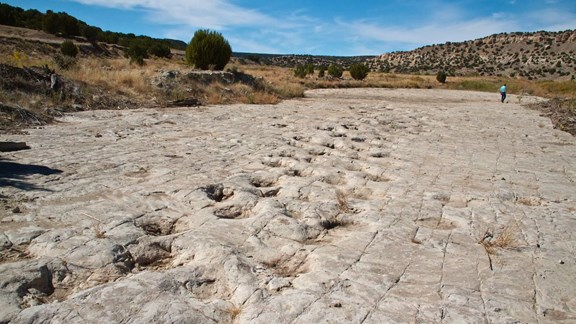
These primitive canyons in the Comanche National Grasslands are home to the largest dinosaur tracksite in North America. Over 1,900 prints in 130 separate trackways extend across a quarter mile of bedrock along the banks of the Purgatoire River.The round trip hike to the dinosaur tracks is 11.2 miles, starting at the Withers Canyon Trailhead. From the trailhead, descend 250 feet into the canyons. Pass several points of interest including the Dolores Mission and Cemetery. Continue beyond the paleontological area to the Rourke Ranch National Historic District (approximately 17 miles round trip). Because of the rugged terrain and long distances to various sites, hikers, bikers and equestrians need to plan for extreme heat. Leave early and carry at least one galllon of water per person. Picket Wire Guided Auto Tours: The auto tour is the only authorized motorized access into Picket Wire Canyonlands. Knowledgeable guides will share difficult-to-find dinosaur tracks and rock art as well as interesting prehistoric and historic stories. Tour participants need their own four-wheel drive, high clearance vehicles (trucks or SUVs, no all-wheel drive cars or ATVs). The tour is all day, from 8 a.m. to 4 p.m., and offered on Saturdays in May, June, September, and October. Reservations are required. Visit recreation.gov or call 877-444-6777. Jeep SUV can be rented from Campground Car Rentals at La Junta KOA.
1420 East Third Street
La Junta, CO 81050
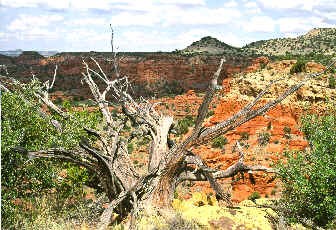
The Comanche National Grassland includes over 440, 000 acres in southeastern Colorado. On the Comanche National Grassland, you can explore southeastern Colorado's rich history. The Grassland has many stories to tell, from dinosaurs roaming the shoreline of a vast lake 150 million years ago, to Mexican and American traders traveling the Santa Fe Trail 150 years ago. Natural BeautyThe Grassland is a place of unequaled sunsets, golden prairies, fragrant juniper canyonlands, and extraordinary wildlife viewing. Rare species such as the Lesser Prairie Chicken, the Golden Eagle, and the Swift Fox make the Comanche their home. A wide variety of other animals, including pronghorn, coyotes, hawks, burrowing owls, wild turkeys, badgers, prairie dogs, turtles, roadrunners and collared lizards also live here. Visit our resident critters on the Comanche National Grassland.Jurassic TracksImagine what the landscape looked like 150 million years ago during the Jurassic period. In southeastern Colorado you would have been surrounded by a tropical forest, complete with dinosaurs like apatosaurus and allosaurus.Today, you can see evidence of the dinosaurs on the Comanche. These Jurassic creatures walked along the shore of a shallow lake, leaving behind their footprints in the mud. Today, these footprints form one of the largest documented dinosaur trackways in North America, with over 1300 visible tracks. Come and explore these creatures of the past on the Comanche National Grassland.Ancient Rock ArtNow, imagine this area 1,500 years ago. You would have seen ancient peoples creating rock art on the canyon walls.Rock art, images pecked or painted onto rock surfaces, held great significance for its creators. The oral traditions of many Native American groups tell of the spiritual power of the rock's surface. Rock art images may have been created to ensure a successful hunt or a year of plentiful food. Think about the lives of those ancient artists when you visit the canyonlands of the Comanche.The Santa Fe TrailIf you visited southeastern Colorado between 1821 and 1880 you could have traveled the Santa Fe Trail, bringing goods or military supplies to cities and towns along the Trail. Imagine the long stretches of rugged trail, your water supply running out, your food rations consisting of nothing but flour, bacon, sugar, and salt. You can still travel sections of the Santa Fe Trail by foot or horseback. Journey back to the days of covered wagons on the Comanche National Grassland.HomesteadsIf you were a settler in southeastern Colorado during the 1870s and 1880s your family had to be self-sufficient to survive. You grew much of your own food, obtained meat by hunting and stock raising, and carried water to your home in buckets from the closest creek or spring. The effort of the entire family was essential for daily survival.The Comanche National Grassland is home to many abandoned homesteads. Imagine these crumbling structures as living homes with the sounds of family echoing through them.
1420 East Third Street
La Junta, CO 81050
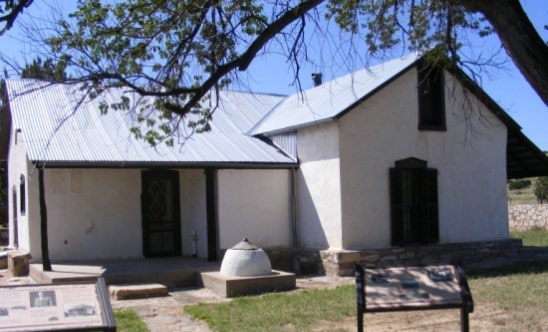
Rourke Ranch, also known as the Wineglass Ranch, was a cattle and horse ranch founded by Eugene Rourke in 1871. Three generations of the Rourke family lived and worked on the ranch ensuring its survival over a span of a hundred years. When the ranch was sold in 1971, it was known as one of the oldest and most successful enterprises in southeast Colorado, expanding from Eugene's original settlement of 40 acres to well over 52,000 acres. Rourke Ranch is now a National Historic District.
Directions:From La Junta, Colorado drive south on Highway 109 for 13 miles; turn right (west) on County Road 802 (David Canyon Road) and continue for 8 miles. Turn left (south) on County Road 25 and travel for 6 miles. Turn left at Picket Wire Corrals onto Forest Service Road 500A. Travel along Forest Service Road 500A for 3 miles, following the signs to Withers Canyon Trailhead. Park at Withers Canyon Trailhead parking loop. Hike 8.8 miles along Picket Wire Canyon Trail to the historic ranch.
1420 East Third Street
La Junta, CO 81050
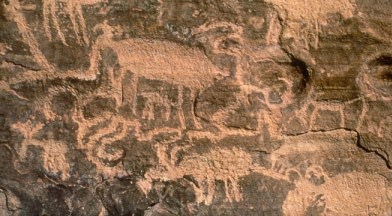
Vogel Canyon is a beautiful sandstone canyon spattered with pinon pine and shortgrass prairie. It was carved out by a tributary of the Purgatoire River and has three permanent springs located at the bottom of the canyon. This area offers some of the best hiking near La Junta with four short trails of easy to moderate difficulty. The sandstone walls of the canyon feature Native American rock art dating from the 1200s to the 1700s.During the 1870s a spur of the Santa Fe Trail was developed by the Barlow and Sanderson Mail and Stage Line, and a section of this trail is featured on the Prairie Trail (see below).A variety of wildlife inhabits this area including deer, antelope, coyote and various birds. The best time to view wildlife is early in the morning or just before sunset.
Comanche National Grasslands
1420 East Third Street
La Junta, CO 81050
That doesn't mean this area has to always be empty. When you start reviewing camping options, your history will display here to help compare sites and find the best stay. You will be able to share your stay information with friends or family and save it for a later time if you have a KOA Account.
Make checkout easy by booking all your reservations at once. Add your sites from different campgrounds into your shopping cart* and then choose checkout.